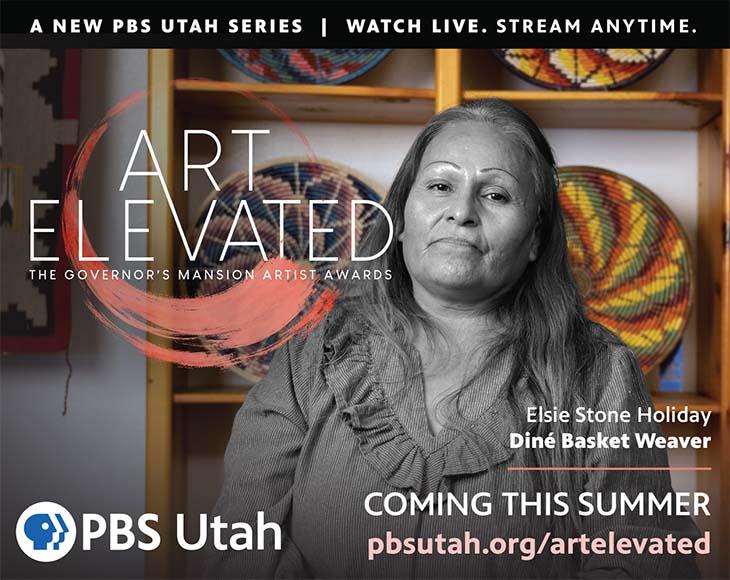Utah Opera
Motormouths
Motormouths

By Jeff Counts
Every modern theatrical discipline has Greek DNA, especially when it comes to comedy. Plays, ballets, movies, operas. The satirical courage and structural quirks of Aristophanes still inform the best of them. One direct line that can be drawn from then to now is the dramatic technique of Parabasis, in which ancient audiences were directly addressed by the chorus. With the main actors temporarily offstage and the action of the plot suspended, the unmasked voice of the author could hold forth on various philosophical or moral concerns. A formal feature of these extended non sequiturs was the Pnigos (Greek for “choking”) in which a debater would rattle off a long, literally breathless string of words at breakneck speed. This practice, technically if not thematically, survives today as the patter song.
Many opera, operetta and Broadway composers have made use of these death-defying verbal fireworks to inject energy into key moments in their stories. When it’s done well by a capable singer / wordslinger on stage, it’s very impressive. And very funny. The word itself, “patter,” comes not from anything Aristophanes wrote, but from Christian ritual. The Pater Noster (Lord’s Prayer) is a common part of any congregant’s weekly experience and has been for centuries. It’s so common, in fact, reciters are known to rush through it by rote and the “patter” of modern patter song is a winking (and conveniently onomatopoeic) reference to this sort of hasty, monotone text delivery.
Patter singing came into operatic vogue in the early 1700s but didn’t settle into its timelessly recognizable form until the latter decades of that century. In the comic works of Mozart and a few of his European contemporaries, “rapid recitative in syllabic prosody,” as Nicolas Slonimsky put it, was masterfully deployed in showpieces for hapless villains and bumbling comrades alike. Rossini and Donizetti picked up where Mozart left off when they came to power in the early 19th century and the tongue-twisty rhymes and rhythmic land mines of their patter arias challenged every singer who faced them, even the native Italian speakers. Prime examples from these formative periods occur in La nozze di Figaro, Il barbiere di Siviglia, La Cenerentola, Don Pasquale, L’elisir d’amore and many others. Golden age Broadway composers made good use of the tradition as well (recall “Ya Got Trouble” from The Music Man) but perhaps the fullest realization of patter song potential was in operetta, that delightfully uninhibited fish-and-fowl space between grand opera and the musical. This is where the true kings of the form made their mark.
W. S. Gilbert and Arthur Sullivan had a 25-year partnership that began in 1871. Sullivan, the son of a military bandmaster, wrote the music. Gilbert, the son of a naval surgeon who wrote fiction on the side, handled the words. That these two chips off the old block became the first power duo in theatrical music might seem fated now, but we can thank Richard D’Oyly Carte, a London theater manager who considered it his life’s work to establish a comic opera tradition in England. Forget the fact that Carte’s name seems like something Gilbert made up, he was an opportunistic visionary. The Savoy Theatre he built in 1881 to better serve and develop his cash cows featured innovations such as numbered seating, free programs and, most daring of all, electricity. But profits and quarrels often go hand in hand in such arrangements and an eventual dispute over who should pay for a new lobby carpet broke the spell for good.
If parts of the brief joint-history above sound themselves like the plot points in a Gilbert and Sullivan operetta, it is because of how brilliant the team was at lampooning the foibles of man. Before Gilbert’s withering gaze, specifically, the comic possibilities of human absurdity manifested iconic characters whose self-important puffery is as recognizable today as then. Enter Major General Stanley from The Pirates of Penzance. He’s more eccentric than hostile, a fussy and peculiar anachronism. Easy to laugh at, but impossible not to love, Stanley’s most famous moment comes near the end of Act I with the introductory number that swiftly reads out prominent features of his resume, while glossing over his more notable shortcomings. It’s funny, cerebrally dazzling and quite possibly the greatest patter song of all time.
One of the measurements of success for any piece of art, admittedly sometimes a dubious one, is an accounting of its pop culture progeny. “I Am the Very Model of a Modern Major-General,” by this standard, is evergreen. Tributes and parodies abound and continue to be written. They include references to the periodic table, Presidents Obama and Trump, characters in episodes of Dr. Who, Star Trek: The Next Generation and Frasier. Lin-Manuel Miranda tipped his hat to the song in Hamilton and the minions of Despicable Me 3 did a loose version of it in their own indecipherable language (there’s a wonderful article in the Financial Times by Helen Brown from 2021 if you want to read more about the “Major General Song’s” continuing life). Interestingly, the model for the “Model” was widely thought to be General Sir Garnet Wolseley, though others believe it was an uncle of Gilbert’s wife, one General Henry Turner. Either way, Wolseley reportedly thought he was the inspiration and took no offense. He even sang the song himself occasionally. Or tried to.
As I said before, an expertly executed patter song is as awe-inspiring as any high note and as hilarious as the most committed pratfall. It may feel like we live in a post-intellectual world today, but we also live in a world of Wordle (there it is, the unbreakable 2022 timestamp on this essay). Vocabular acuity still matters, as does making fun of our most cherished twin weaknesses—self-awareness and its complete lack. Add in Olympic-level speed and the trip hazards of high-risk rhyming schemes, and the legacy of Aristophanes’ original “choking” speeches is confirmed. But for professionals only, please. Don’t try this at home.
